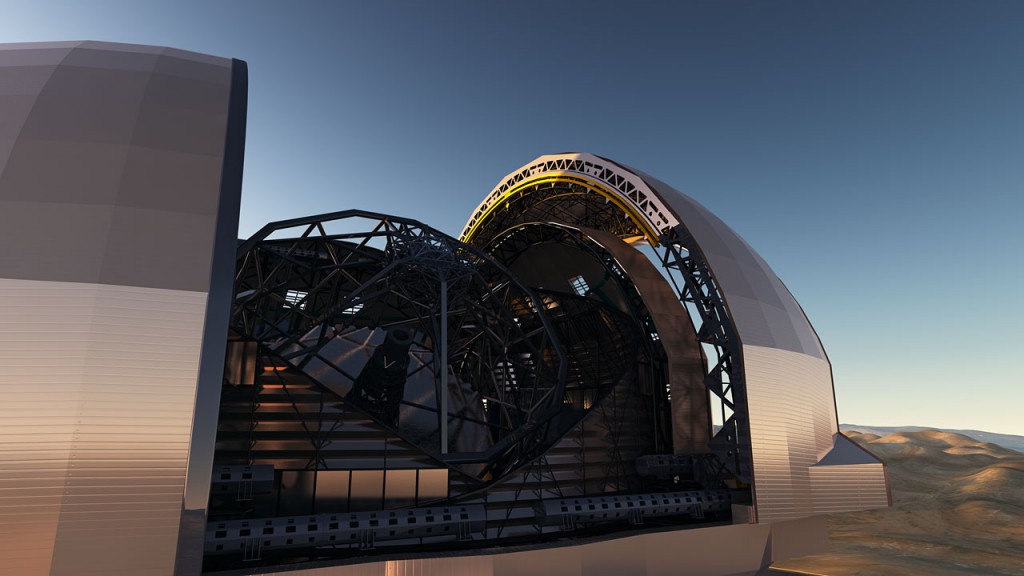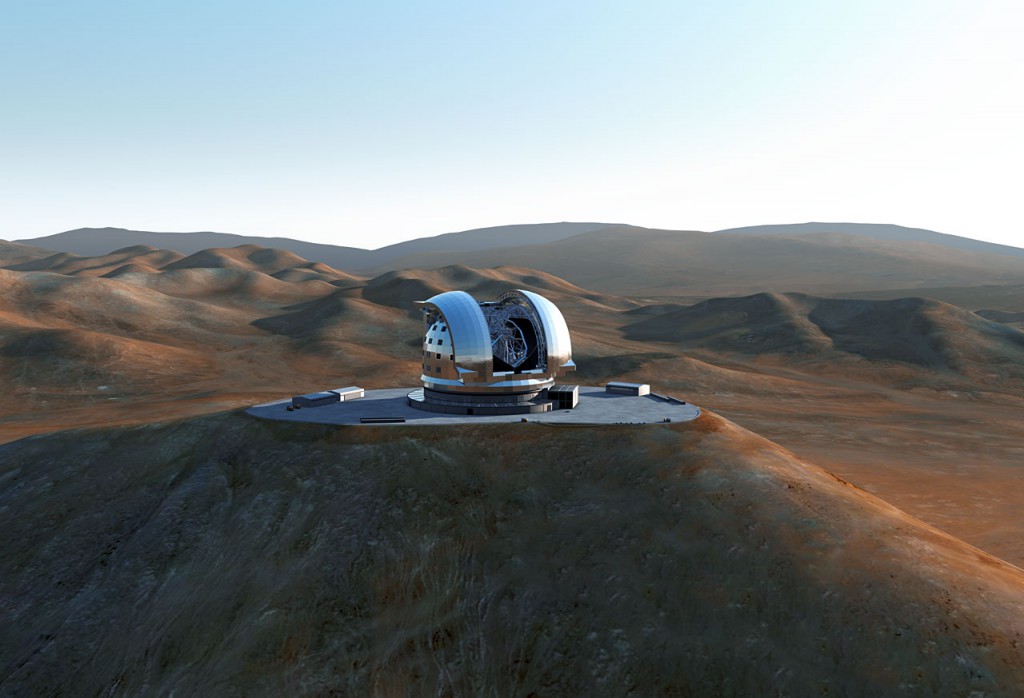Construction begins on a new alien-hunting telescope
Workers took the first step in building the world’s largest optical and infrared telescope on Thursday, June 19 by blowing up the top of a mountain. This alien-hunting telescope will be how large? The answer is extremely large.
As its name describes, the European Extremely Large Telescope (E-ELT) will be massive. The telescope’s main mirror will be approximately one hundred twenty eight feet in diameter and composed of seven hundred ninety eight hexagonal six foot mirror segments, each of which can be moved independently. As Wired points out, “The current crop of really big telescopes pale in comparison.” For example, the Keck telescopes in Hawaii have mirrors that are approximately thirty three feet wide. With its massive mirror, the European Southern Observatory explains that the E-ELT will “gather 13 times more light than the largest optical telescopes existing today.”

So what does all of that light-gathering power provide to scientists? Wired describes,
For one thing, the ability to see back to the beginning of the universe, watching the first stars and galaxies form. Researchers will also use the E-ELT to help them figure out the mysteries of dark matter and dark energy. But the thing that has astronomers more excited about right now is the telescope’s ability to discover and characterize new planets around other stars.
The E-ELT will be a valuable tool in the search for extraterrestrial life. Its ability to directly image exoplanets and study the atmospheres of planets will help scientists identify worlds that may support life as we know it. Ignas Snellen, an astronomy professor at the University of Leiden in the Netherlands explains, “If there is life on another planet, then it is very far away. We cannot see the life. But we can determine from a distance what types of gases there are in the atmosphere. If you look at the Earth from a long distance, you see oxygen here, because there is life. With this telescope, you can look for oxygen on other planets.” Snellen is part of a group that develops observation and data-reduction techniques for ground-based telescopes, techniques that will be used by the E-ELT.
The Netherlands is just one of fifteen countries participating in the E-ELT project, which is operated by the European Southern Observatory.
A tiny blast of explosives occurred at approximately 1:40 p.m. local time on June 19 to clear the way for construction at the top of Cerro Armazones mountain in Chile’s Atacama desert. Eventually more than fifty nine feet will be removed from the mountain’s peak to create a flat surface that will support the 2,700-ton telescope.

Although the process is now officially underway, it will take a decade to finish building the E-ELT. It is expected to go online in 2024.






